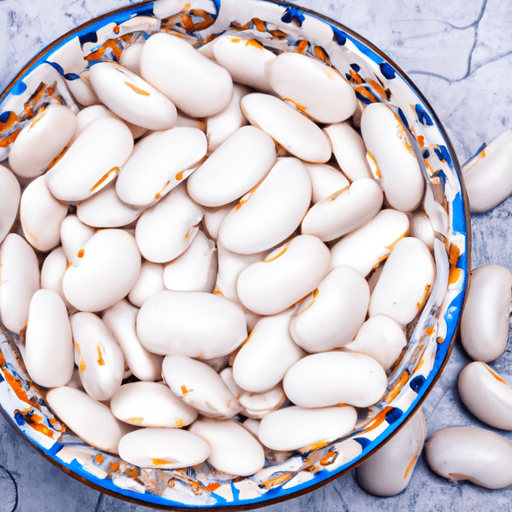Unlocking the Delicious Potential of White Kidney Beans
From rich stews to hearty salads, white kidney beans, also known as cannellini beans, have become a staple in many kitchens around the world. With their creamy texture, mild flavor, and impressive nutritional profile, these versatile legumes can elevate any dish they’re added to. In this blog post, we will dive into the world of white kidney beans, exploring their taste, common uses in cooking, nutritional value, and uncovering some interesting history and facts along the way.
Taste and Texture
White kidney beans have a delicate, creamy texture that makes them a perfect ingredient for a variety of dishes. When cooked, they retain their shape, holding up well in soups, stews, and salads. In terms of taste, these beans have a mild, slightly nutty flavor, allowing them to blend harmoniously with a wide range of ingredients and seasonings. Their ability to absorb flavors makes them an ideal canvas for experimenting with different culinary creations.
Common Uses in Cooking
Thanks to their versatility, white kidney beans are suitable for both main courses and side dishes. Whether you choose to use canned beans or cook them from scratch, these legumes are incredibly convenient to work with.
1. Soups and Stews: White kidney beans add a creamy texture and earthy taste to soups and stews. They effortlessly transform a simple vegetable broth into a satisfying meal. Pair them with aromatic herbs, vegetables, and spices to create a hearty dish that will warm your soul.
2. Salads: These beans make a fantastic addition to salads, bringing a robust texture and subtle flavor. Toss them with fresh vegetables, herbs, and a zesty dressing to create a nutritious and filling salad.
3. Dips and Spreads: White kidney beans can be transformed into smooth and creamy dips or spreads. Combine them with garlic, lemon juice, and olive oil for a delicious and protein-packed alternative to traditional hummus.
4. Pasta Dishes: Incorporating white kidney beans into pasta dishes adds both texture and a nutritional boost. Their mild taste pairs wonderfully with tangy tomato sauces or rich, cheesy pasta bakes.
The options are endless when it comes to white kidney beans, allowing you to get creative in the kitchen and explore different flavor combinations.
Nutritional Value
Apart from their pleasing taste and culinary versatility, white kidney beans boast an impressive nutritional profile. These legumes are a fantastic source of plant-based protein, making them an excellent choice for vegetarians and vegans. They’re also packed with dietary fiber, which aids in digestion and promotes a feeling of fullness. Additionally, white kidney beans contain valuable minerals such as iron, magnesium, and folate, which are essential for maintaining a balanced diet.
Interesting History and Facts
The roots of white kidney beans can be traced back to the ancient Mediterranean region, where they were enjoyed as a staple food by the Greeks and Romans. Their name, cannellini, comes from the Italian word “canna,” meaning tube, referring to their shape. White kidney beans were brought to the United States by European settlers in the 19th century and have since become a popular ingredient in many traditional American recipes, such as baked beans and chili.
One interesting fact about white kidney beans is that they belong to the same family as other legumes, including black beans, pinto beans, and chickpeas. This family, known as Fabaceae or Leguminosae, is one of the largest plant families, with thousands of species worldwide.
Another intriguing aspect of white kidney beans is their beneficial impact on the environment. As legumes, they have the unique ability to fix nitrogen into the soil, reducing the need for artificial fertilizers and contributing to sustainable agricultural practices.
White kidney beans are a remarkable ingredient that deserves a place in every kitchen pantry. Their mild flavor, creamy texture, and nutritional value make them a versatile addition to countless dishes. From nourishing soups to vibrant salads, these legumes offer a delightful alternative to meat-based proteins. So, let your culinary creativity blossom and savor the delicious potential of white kidney beans in your next home-cooked meal.
Origin and Common Uses:
- White kidney beans, also known as cannellini beans, have been cultivated in Italy since the 16th century. They originated in South America and were brought to Europe by Spanish explorers.
- White kidney beans are commonly used in Italian cuisine, especially in dishes like minestrone soup, pasta e fagioli, and pasta salads.
- They are also popular in other Mediterranean cuisines, such as Greek, Turkish, and Middle Eastern.
- In addition to savory dishes, they can be used to make desserts like bean-based cakes and icings.
Nutritional Benefits:
- White kidney beans are a good source of plant-based protein, containing approximately 15 grams of protein per cooked cup.
- They are also high in dietary fiber, with about 11 grams per cooked cup. This fiber content can support digestive health and provide a feeling of fullness.
- White kidney beans are an excellent source of complex carbohydrates, which are important for energy production.
- They provide several essential minerals such as iron, phosphorus, and magnesium.
- Additionally, white kidney beans are naturally low in fat and cholesterol-free.
Unique Properties and Historical Significance:
- White kidney beans get their name from their distinctive kidney shape and creamy white color.
- They have a mild, earthy flavor that pairs well with a variety of ingredients.
- Like other legumes, white kidney beans contain phytochemicals and antioxidants, which have been associated with health benefits such as reducing the risk of chronic diseases.
- In ancient times, beans, including white kidney beans, were considered a staple food due to their long shelf life and nutritional value.
- Throughout history, white kidney beans have been used both medicinally and as a food source, and they continue to be valued for their versatility in cooking.




Use the share button below if you liked it.
It makes me smile, when I see it.